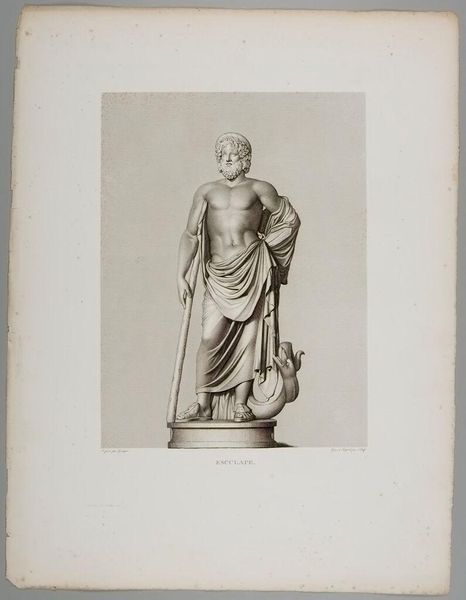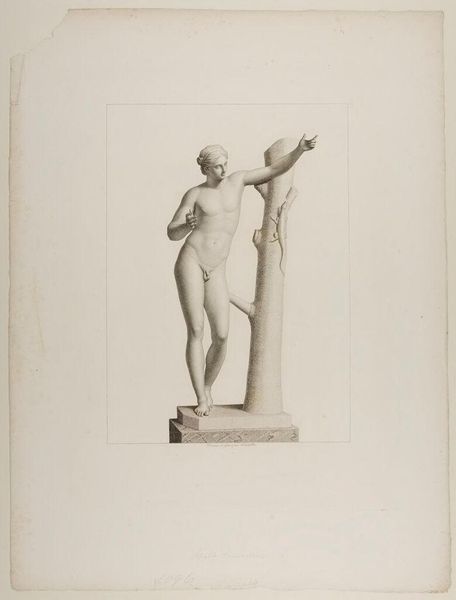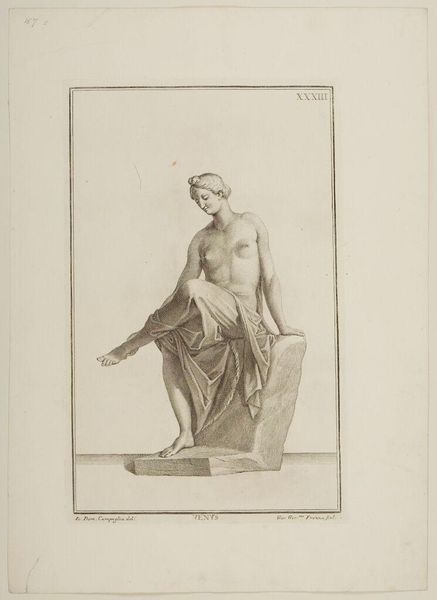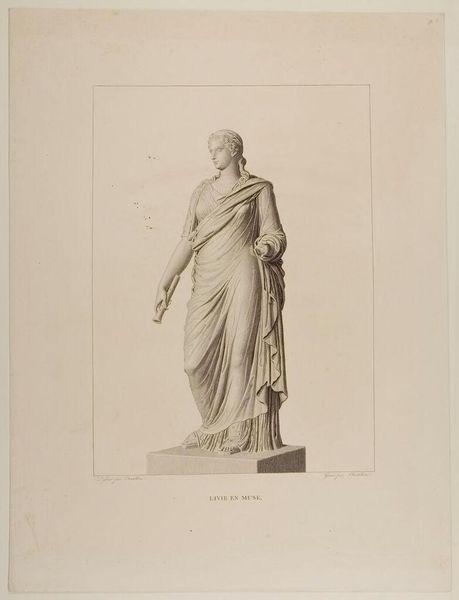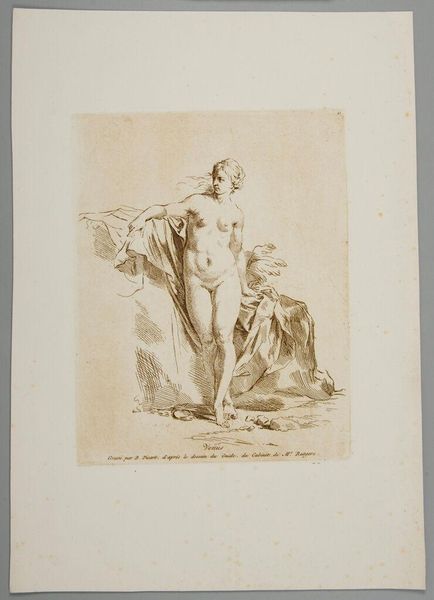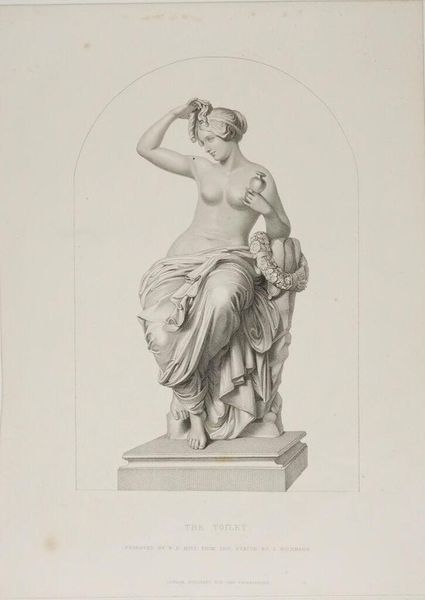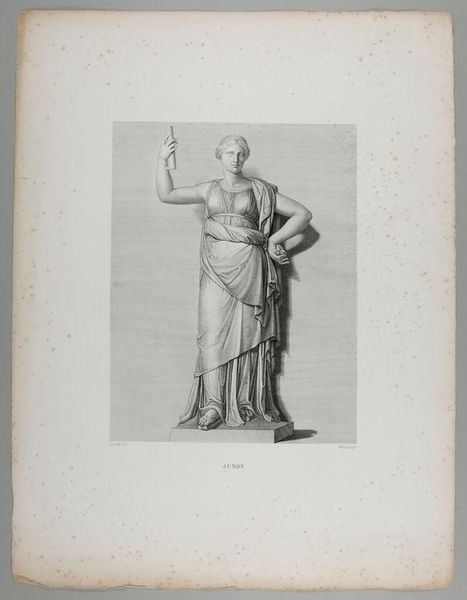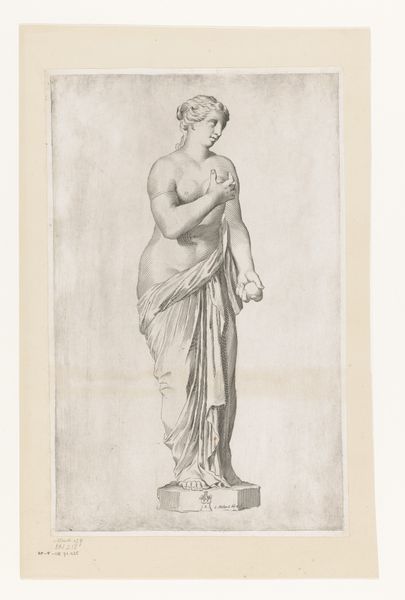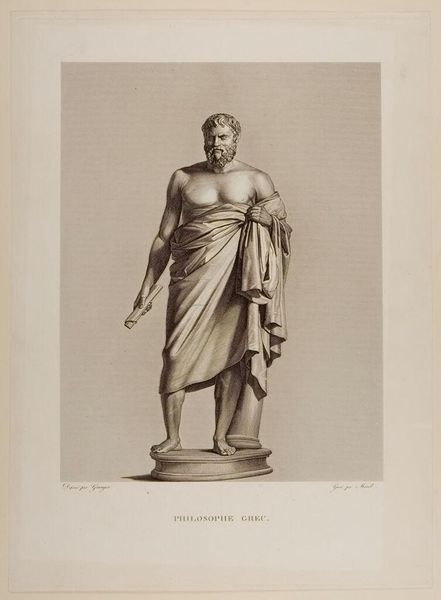
Copyright: CC0 1.0
Curator: This is Henri-Guillaume Chatillon's rendering of Antinous as Aesculapius. What strikes you about it? Editor: The intense stillness, almost serene. The figure emanates an ideal, but it feels strangely cold, doesn’t it? Curator: Indeed. The serpent is a key symbol. Aesculapius, the Greek god of medicine, often appears with a snake, a representation of healing and resurrection. Editor: Antinous's deification is politically charged. Hadrian immortalized his lover, but that act also solidified imperial power. Curator: The adoption of Aesculapius’s symbolism merges Antinous with established divine iconography, elevating him but also perhaps containing the meaning of his existence. Editor: Creating a narrative to control public memory—it speaks volumes about power dynamics then, and the power of art to challenge or reinforce those structures now. Curator: It makes you think about the narratives we construct and inherit. Editor: Absolutely, a reminder of the politics that shape our ideals.
Comments
No comments
Be the first to comment and join the conversation on the ultimate creative platform.
